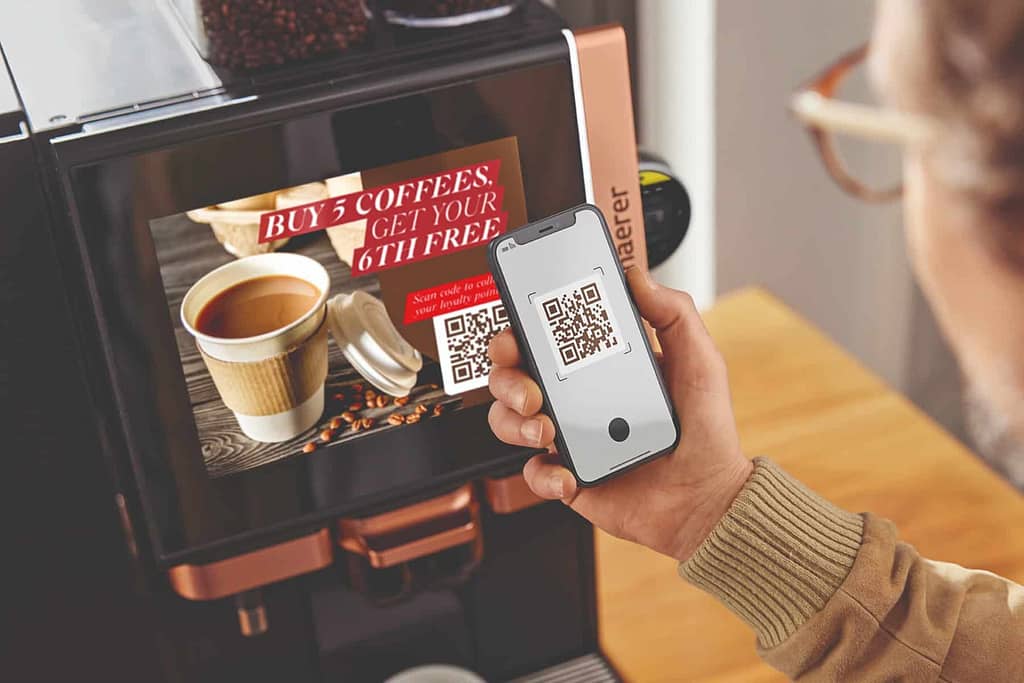Schaerer discusses its Coffee Link Portal system, and how its cloud technology gives businesses statistical solutions to questions not yet asked.
When we don’t know the answer to something, it’s common to turn to the internet for a solution. But not every question can be easily answered by the internet.
What are my busiest hours of operation? Do my customers prefer oat or soy milk? Are we wasting too much of our product? What’s our most popular drink?
While Google can’t help with these questions, Schaerer’s Coffee Link Portal can. The Swiss coffee machine manufacturer has been developing its cloud technology for years. As such, the company is now able to provide the answers to questions customers haven’t even considered.
“As technological trends changed over the years and awareness of the internet increased, a new digital strategy was developed in 2016 and our first Coffee Link Portal was established in 2018,” says Schaerer Digital Product Manager Irina Simon. “The purpose of the Schaerer Coffee Link is to digitally optimise the coffee business, to enable new business models, and to improve the end customer experience at the machine.”
Simon says understanding the behaviours of customers is paramount to helping a business grow, and using data to analyse beverage and consumption trends is the way forward.
“When it comes to beverage portfolios, a lot of people are interested in what preferences customers have,” she says. “We have dedicated analytics and dashboards that can show exactly what’s popular.”
Through conversing with the Schaerer team, the company can make specialised databases for any information the customer requests, including dashboards that incorporate data from a fleet of machines within the one business.
Simon says the range of data accessible to Schaerer customers was an important factor when developing the Coffee Link Portal technology, since every business has its own requirements, and their own questions that need answers.
“Since we are offering such a wide digital portfolio, different kinds of customers can find a solution dedicated to their needs,” she says.
Simon adds that the development of this technology in recent times has been a direct response to numerous trends in the coffee industry, such as the shortage of skilled workers and sustainability concerns.
“We want to help our customers keep pace with changing consumer behaviours and customer experience,” she says.
“Sustainability plays a big role [in the coffee industry] at the moment. Through the portal, you can get insights on energy consumption, or you can look at ingredients and how much each one is used, so you can reduce waste in your operations.”
To empower businesses with information, Schaerer coffee machines feature a modem that collects valuable data, by which the company can then offer consulting services to analyse the technological findings.
“Schaerer was one of the first coffee machine manufacturers to recognise the potential and importance of digital solutions as a complement to the actual coffee machine business, and to include it all in the one portfolio,” says Simon. “Through our experience, we see that our customers are at very different points in their own individual digital journeys, and therefore have completely different needs.”
The Schaerer team has divided these differing journeys into three general stages, organised not by experience owning and operating a café, but through technological knowledge. As customers progress through each stage, Schaerer provides more resources to further grow their business, while incorporating more technology into their operations.
“The consultation and customer care at the very beginning of the partnership is extremely important,” says Simon. “The customer is brought into the system where they are at that moment [in terms of digital readiness] and we’ll find the product that fits their needs.”
Customers in the earliest stage of technology development and knowledge are considered “transparency seekers”.
“The transparency seeker is mainly interested in exploring the coffee machine data, with the objective to gain insights about sales performance, ingredient consumption and service-related issues,” Simon says. “The visualized data [provided by Schaerer] helps customers get insights on coffee sales and machine availability, as well as monitor the coffee machine life cycle.”
Once customers start to gain knowledge on some of the basic statistics provided, Schaerer advances them into the next category of ‘Coffee Business Optimisers’, which teaches customers how to get results and data from a fleet of Schaerer machines.
“The optimisers are the ones that really want to grow and expand,” says Simon. “[Coffee Business Optimisers] are not only using the data visualisation but are also using bi-directional communication and remote actions to optimise their businesses.”
The third category, called Business Developers, are provided with more data feedback from Schaerer, which allows them to expand their businesses by prototyping and rolling out new concepts.
“The objective [at this stage] is to integrate the coffee machine in existing digital ecosystems and I.T landscapes,” Simon says. “Generally, this is related to self-service concepts or to increase the quality of the user’s experience, including integrating the coffee machine into existing apps, unmanned stores, robot cafés, and so on.”
Simon adds that customers that use their own apps for their businesses have found the Schaerer system especially helpful.
“The mobile phone is the most frequently used device nowadays, and therefore it is also a focus in our industry,” she says.
The versatility of the digital solutions and the Coffee Link Portal have allowed Schaerer to reach markets from across the world, and address the unique concerns each community has.
“In different markets, such as China or the United States, we need to understand that they face different challenges to what we face in Europe,” says Simon. “Customers show different buying behaviours, which is why it’s always a question of balance and prioritisation with what we implement.
“With the remote functionalities we developed in Coffee Link, we can prevent having to send someone over to fix machines.”
Users can access this information through the Coffee Link Portal, or through Schaerer’s Application Programming Interface (API).
Simon says the major difference between the two sources is that the API data is presented in a raw fashion, meaning someone less advanced along their digital understanding might have trouble interpreting the figures.
“It’s important to understand that the data in the portal has already been prepared and thus made readable, whereas with APIs, the data is raw, and the interpretation must be done by the client,” she says.
Simon adds that the technology can be useful in inspiring businesses to reach greater heights with more knowledge at their disposal.
“Businesses can maximise the potential of digital solutions by thinking outside the box and looking at other sectors and industries,” she says. “The value of a digital solution lies not in its technology, but in how it enriches people’s lives.”
By providing the answers to any question a coffee shop might have, through a personalised and thorough approach, Schaerer says there is no need for frantic internet searches to quickly improve a business.
“We always put the customers’ concerns in the centre, and we look for ways to support them digitally.”
For more information, visit www.schaerer.com
This article was first published in the November/December 2023 edition of Global Coffee Report. Read more HERE.
The post How Schaerer’s Coffee Link Portal provides all the answers appeared first on Global Coffee Report.


